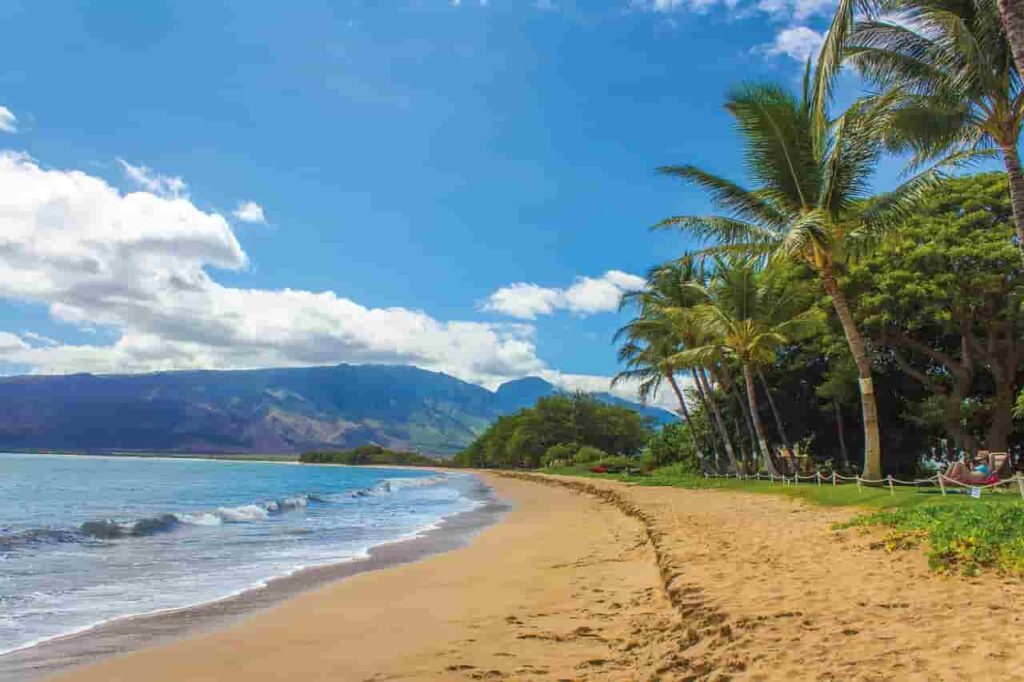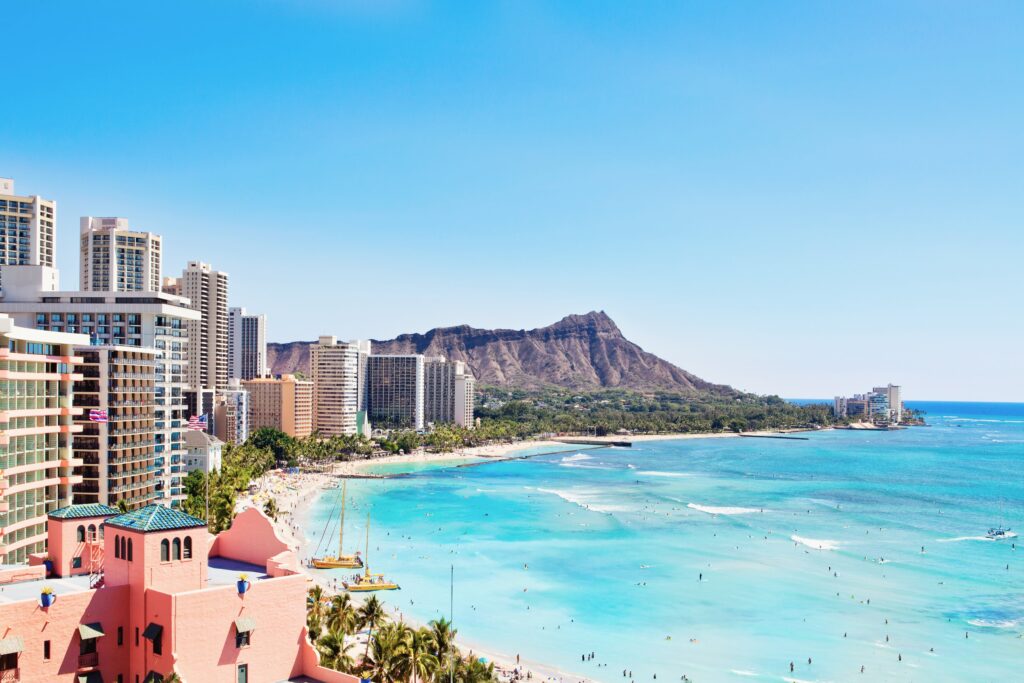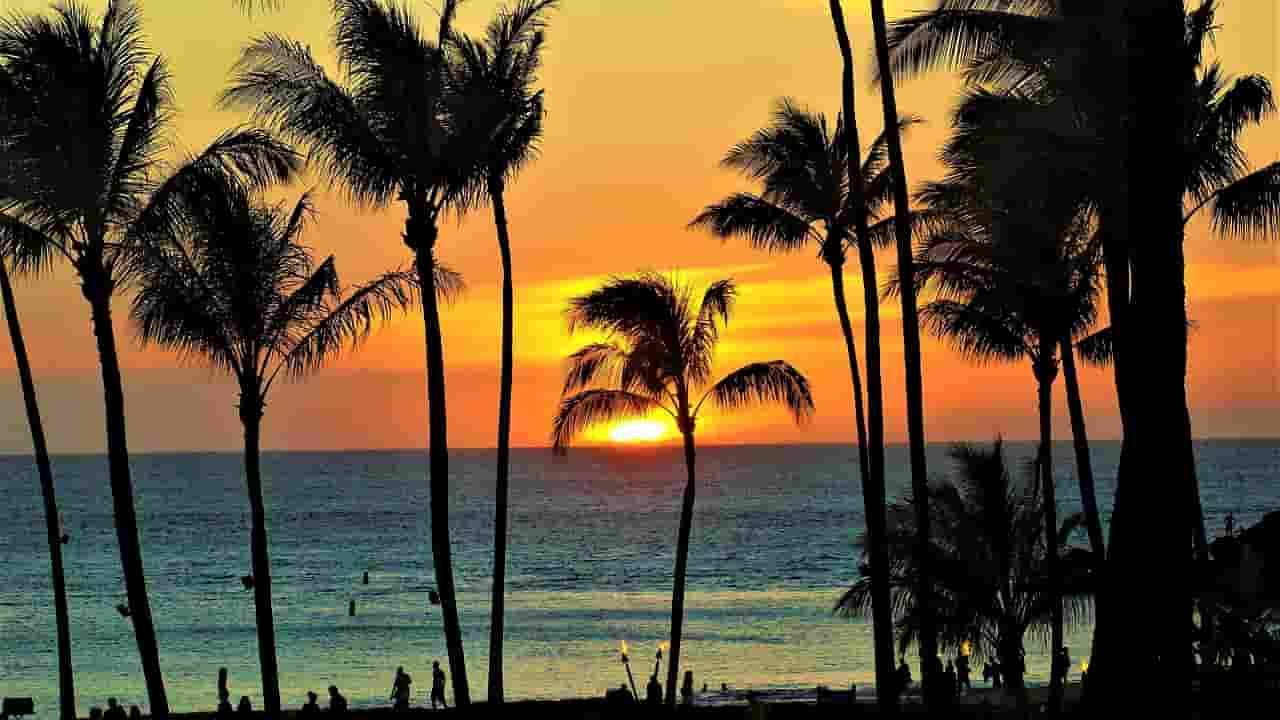A trip to Hawaii is a dream for many, but the costs can vary significantly depending on several factors. These include the island you visit, the time of year, and your travel style. While Hawaii can be enjoyed on a budget with careful planning, understanding the cost breakdown is essential for managing your expenses effectively.

Island-Specific Costs
The cost of a trip to Hawaii varies by island. For instance, Oahu is generally the most affordable destination among the Hawaiian islands. Data suggests that hotel room rates on Oahu are approximately 21% lower than the state average. Conversely, islands like Maui tend to be more expensive.
a Trip to Hawaii: Cost Estimates for Different Travel Scenarios
To provide a clearer picture, let’s break down the estimated costs for different types of trips. These scenarios reflect two popular travel seasons: peak summer and shoulder season.
Peak Summer Travel Season (10 Nights)
- Four-Star Beachfront Resort (Hilton Hawaiian Village): Approximately $15,090, including a 10-day rental car.
- Three-Star Hotel (Holiday Inn Express Waikiki): Around $10,447, which covers a 5-day rental car.
- Low-Cost Condo: About $7,781, which includes budget-friendly meals and a 5-day rental car.
Shoulder Season (7 Nights)
- Four-Star Beachfront Resort: Estimated at $9,574, including a 7-day rental car.
- Three-Star Hotel: Costs around $6,488, with a 2-day rental car.
- Low-Cost Condo: Approximately $4,936, including tightly budgeted meals and a 2-day rental car.
Breakdown of Costs
- Accommodation:
- Four-Star Resort: $50 per night for resort fees, with parking costing $68 daily.
- Three-Star Hotel: Resort fees of $29.49 per night, with parking at $45 per day.
- Condo: Fees vary, and parking costs are not typically included.
- Meals:
- Four-Star Resort: Expect to spend $225 nightly on dinners, and around $100 daily for breakfasts and lunches.
- Three-Star Hotel: Includes free breakfast, with additional meal costs of $50 per day for lunches and $225 nightly for dinners.
- Budget Meals: Opting for budget-friendly dining can significantly reduce costs.
- Activities:
- Peak Season: Activities such as snorkeling, surfing lessons, a visit to Pearl Harbor, and a day at a water park.
- Shoulder Season: Includes snorkeling, Pearl Harbor, and a water park, but excludes surfing lessons.
- Car Rental:
- Prices range from $45 to $150 per day, depending on the type of vehicle and rental duration.

a Trip to Hawaii
| Travel Scenario | Accommodation Type | Duration | Accommodation Cost | Food & Drinks | Roundtrip Airfare | Activities & Day Tours | Transportation & Car Rentals | Total Estimated Cost |
|---|---|---|---|---|---|---|---|---|
| Peak Summer Travel Season | Four-Star Beachfront Resort (Hilton Hawaiian Village) | 10 Nights | $15,090 | $2,250 ($225 x 10 nights) | $1,000 | $300 | $500 (10-day rental car) | $19,140 |
| Peak Summer Travel Season | Three-Star Hotel (Holiday Inn Express Waikiki) | 10 Nights | $10,447 | $2,250 ($225 x 10 nights) | $1,000 | $300 | $225 (5-day rental car) | $14,222 |
| Peak Summer Travel Season | Low-Cost Condo | 10 Nights | $7,781 | $1,000 (tightly budgeted meals) | $1,000 | $300 | $225 (5-day rental car) | $10,306 |
| Shoulder Season | Four-Star Beachfront Resort | 7 Nights | $9,574 | $1,575 ($225 x 7 nights) | $1,000 | $300 | $315 (7-day rental car) | $12,764 |
| Shoulder Season | Three-Star Hotel | 7 Nights | $6,488 | $1,575 ($225 x 7 nights) | $1,000 | $300 | $90 (2-day rental car) | $9,453 |
| Shoulder Season | Low-Cost Condo | 7 Nights | $4,936 | $700 (tightly budgeted meals) | $1,000 | $300 | $60 (2-day rental car) | $6,996 |
a Trip to Hawaii: Tips for Reducing Costs
- Accommodation vs. Car Rental:
- If exploring the island is a priority, avoid high rates for beachfront hotels and consider renting a car.
- Conversely, if you plan to spend most of your time on the beach, save on car rental and parking fees.
- Dining Economically:
- Choose affordable dining options away from tourist hotspots.
- Purchase groceries for self-prepared meals or visit local markets.
- Consider Condos:
- Condos often offer lower rates compared to hotels and may include kitchen facilities for preparing meals.
- Use Points and Miles:
- Leverage credit card points, airline miles, and hotel rewards to reduce overall costs.
- Travel During Off-Peak Times:
- Traveling during shoulder seasons or avoiding peak travel times can lead to significant savings.
Key Takeaways
A trip to Hawaii can fit various budgets with the right mix of accommodation, dining, and activities. Flexibility with travel dates, accommodation choices, and dining options can result in considerable savings.
a Trip to Hawaii: Travel Credit Cards for Rewards
- Chase Sapphire Preferred® Card: Offers flexibility and point transfers.
- Wells Fargo Autograph℠ Card: No annual fee.
- Capital One Venture Rewards Credit Card: Provides flat-rate travel rewards.
- Chase Sapphire Reserve®: High-end perks and bonus travel rewards.
- The Platinum Card® from American Express: Luxury travel benefits.
- Ink Business Preferred® Credit Card: Ideal for business travelers.
When planning a vacation, the allure of a tropical paradise often leads travelers to consider a trip to Hawaii. Renowned for its stunning beaches, vibrant culture, and diverse landscapes, Hawaii promises an unforgettable experience. However, before embarking on a journey to this idyllic destination, it is essential to understand the financial implications of a trip to Hawaii.

Navigating the costs associated with this dream vacation involves examining various factors, including accommodation, dining, activities, and transportation. By breaking down the expenses and exploring strategies for budget-friendly travel, you can better prepare for the investment required to enjoy all that Hawaii has to offer.

